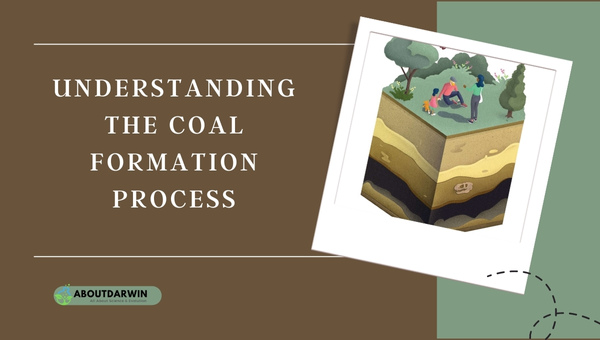Physical Address
304 North Cardinal St.
Dorchester Center, MA 02124
Throughout Earth’s history, coal formation has shaped our energy landscape. In this brief overview, I’ll discuss how coal forms, shedding light on this fascinating geological process.
Coal is the dark, rock-like substance we’re familiar with, but it’s important to remember that it began as plant matter. As these plants decayed over millions of years, they transformed into peat, the initial stage of coal formation. Under the right conditions of heat and pressure, peat gradually metamorphoses into lignite, bituminous coal, and eventually anthracite – the four main types of coal.
However, it’s crucial to recognize that not all coal is created equal. The quality and characteristics of coal depend on factors like its age, geological settings, and the plants from which it originally formed. By understanding the process of coal formation, we can better appreciate its role in our lives, historically, and in today’s energy landscape.
What are Metamorphic Rocks? Formation Process, Types & All
To better comprehend the coal formation process, it’s essential to have a basic understanding of the elements involved. Coal is primarily formed from plant remains that accumulate in swamps and wetlands over millions of years.

These plant materials undergo various chemical and physical changes during this time, ultimately transforming into coal.
There are four main stages in the coal formation process:
The following table outlines some key differences between the four stages of coal formation:
| Stage | Carbon Content | Energy Content | Moisture Content | Color |
|---|---|---|---|---|
| Peat | Low | Low | High | Light brown |
| Lignite | Moderate | Moderate | Moderate | Brownish-black |
| Bituminous | High | High | Low | Dark black |
| Anthracite | Very high | Very high | Very low | Glossy black |
It’s worth noting that each of these stages takes millions of years to progress from one to another. The type of coal formed depends on the specific conditions that the plant remains experienced during its geological history, such as temperature, pressure, and plant materials.
By understanding the basics of the coal formation process, we can gain a deeper appreciation for the natural processes that have made coal an essential energy source throughout human history.
Understanding coal formation helps us appreciate its role throughout human history as a vital energy source. The process of coal formation takes millennia, with several factors coming together to create the conditions necessary for this unique fossil fuel.
Coal deposits vary in composition and energy content primarily because of the varying plant material types and geological conditions.
Moreover, understanding the environmental impacts of coal can enable better decision-making regarding energy production. Some of the key issues associated with coal extraction and use include:
All in all, coal has been a crucial part of human civilization for centuries, but modern awareness of its environmental impacts has shaped the conversation around its future role as an energy source. The more we learn about coal formation, the more we can appreciate our planet’s history and work toward sustainable energy solutions.